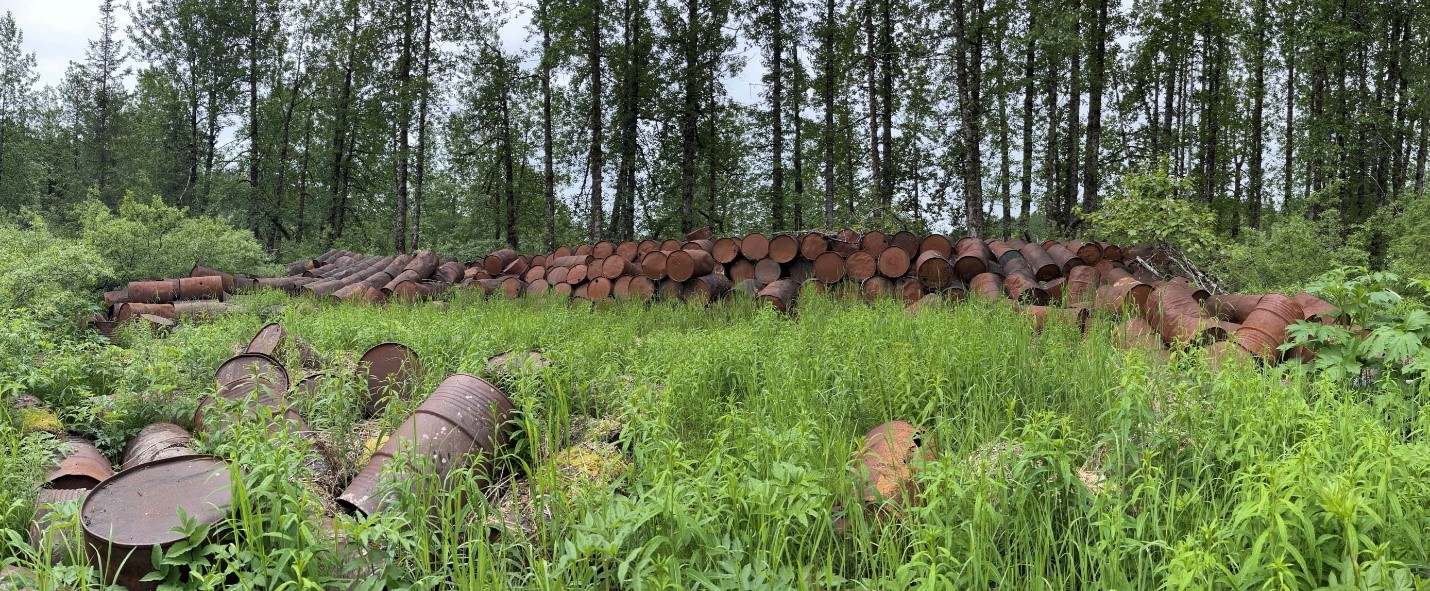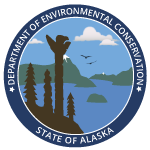ANCSA Contaminated Lands
The Alaska Native Claims Settlement Act (ANCSA) was intended to resolve Alaska Natives' claim to their ancestral lands by giving them title to lands on which to live, conduct economic activities, and practice traditional lifestyles. However, in too many cases the lands returned to Alaska Native ownership were contaminated while under the ownership of the federal government. The DEC Contaminated Sites program has dedicated a team to help identify and verify contaminated sites on ANCSA-conveyed land and assist local entities in the clean up of those sites.

Oil drums abandoned on ANCSA-conveyed land from oil exploration prior to statehood.
Contaminated sites can pose a threat to human health and the environment depending on the location, extent, and severity of contamination. The Contaminated Sites Program is tasked with ensuring that site cleanup occurs in accordance with state statutes and regulations. At most sites, the party responsible for the contamination leads the cleanup effort. The contaminated or potentially contaminated lands conveyed under ANCSA were problematic because there was no coordinated federal response to determine if contamination was present and to clean it up where found. For years, DEC has pushed for a coordinated federal response to address these contaminated lands.
In 2023, Congress appropriated money to the Environmental Protection Agency (EPA) and to the State of Alaska to complete the inventory of contaminated sites on lands conveyed under ANCSA and fund cleanup activities at those sites. EPA and DEC created new programs in collaboration with the Alaska Native Tribal Health Consortium (ANTHC) and the Alaska Native Village Corporation Association (ANVCA) to locate contaminated, or potentially contaminated, sites on ANCSA conveyed lands and provide assistance and funding for their cleanup. This partnership of state and federal government with Alaska Native leaders is making progress on restoring the health of Alaskan lands.

 Indicates an external site.
Indicates an external site.